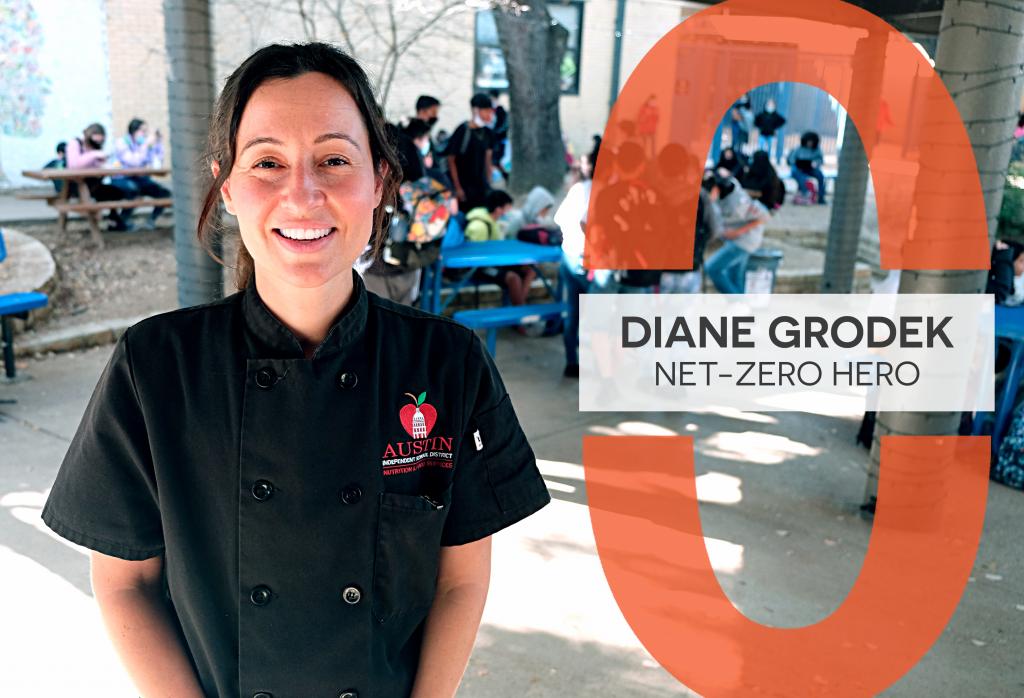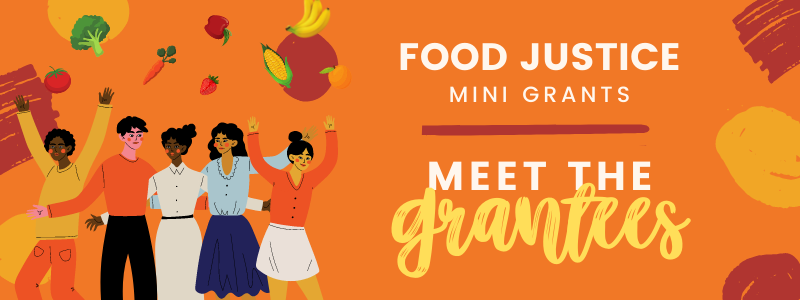
I’m helping to make Austin net-zero by ensuring AISD Food Service considers sustainability in every decision we make — from cafeterias to procurement, recipes to menus, and catering to concessions.
Meet Diane Grodek, our newest Net-Zero Hero! As Executive Chef with the…

Through November 12, leaders from around the world are gathered in Glasgow, Scotland, for the UN Climate Change Conference of the Parties, known as COP26. Throughout these weeks, the global community turns its eyes towards the commitments coming out of Glasgow as countries work together to accelerate climate action.
COP26 created goals focused on four…

I’m helping to make Austin Net-Zero by contributing to my community and raising people's voices to make an impact.
Meet Sheridan Ray, our newest Net-Zero Hero! At only 19, Sheridan is becoming a fixture in sustainability circles across Austin. Inspired by a high school practicum course with Austin’s Park Rangers, Sheridan has sought out opportunities to raise her voice — and those from her com…
Solving climate change requires both individual and collective action. In creating the Austin Climate Equity Plan, we were reminded of the barriers to action many community members face and the critical role institutions can play in leading by example. Businesses and organizations across our region can have a big impact when it comes to addressing the climate crisis.
With this in mind, we are pleased to introduce the Austin Climate Leaders. These organizations, including small and large businesses and local nonprofits, have all pledged their support for the vision and goals of the Austin Climat…

For Austin to be a thriving, equitable, and ecologically resilient community, we must have a system for growing, selling, and consuming food that works for everyone. To work toward this vision, the Office of Sustainability launched a new Food Justice Mini Grant program. The program sought to provide flexible funding of up to $3,000 to organizations supporting those in our community most negatively impacted by food-related injustice…

We’re pleased to introduce you to Aimee Aubin, our office's new Senior Public Information Specialist. Aimee will be working on design and community storytelling.
We asked Aimee a few get-to-know-you questions so you can learn more about her and her background.
Q: Where are you from, and what do you like best about your hometown?
A: I’m from Bay Shore, New York, which is on the south shore of Long Island. It was a great place to grow up. I always f…

Hey, sports fans! Austin’s new professional soccer team, Austin FC, will play its first home game at Q2 Stadium on Saturday, June 19. So, what does this have to do with going green? Aside from the team’s primary color and its rallying cry “Verde! Listos!”, the sustainability features in the stadium are first-rate.
Located near The Domain, Q2 Stadium was built with fan comfort and the…

We’re pleased to introduce you to Phillip Duran, a new Senior Climate Analyst in our office. Phillip will be working on data analysis, specifically calculating citywide and municipal greenhouse gas emissions.
We asked Phillip a few get-to-know-you questions so you can learn more about him and his background.
Q: Where are you from and what do you like best about your hometown?
A: I’m from a little place just east of Dallas called Rockwall, Texas – it’s the littlest county in the bigge…

I’m helping to make Austin net-zero by building a green home using reclaimed materials and generating power on-site
Meet David Brearley, a solar energy professional and technical writer. David serves on the Board of Directors for both the Texas Solar Energy Society and Solar Austin. In early 2015, David embarked on a journey to build a green accessory dwelling unit (ADU) that could accommodate guests and also be…

Image 1 – 2017, Checking the Root Ball of a 5 gallon Tree
An innovative approach to tree distribution
Did you know living near trees improves quality of life? The Austin Community Trees program (ACT) was a pioneer in helping people bring the benefits of trees to their neighborhoods. The pr…
